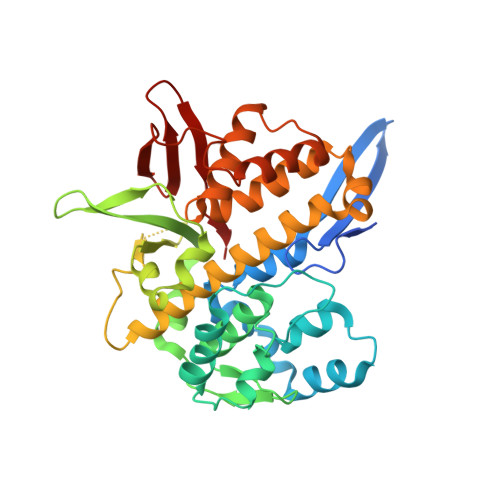Structure of orthoreovirus RNA chaperone sigma NS, a component of viral replication factories.
Zhao, B., Hu, L., Kaundal, S., Neetu, N., Lee, C.H., Somoulay, X., Sankaran, B., Taylor, G.M., Dermody, T.S., Venkataram Prasad, B.V.(2024) Nat Commun 15: 2460-2460
- PubMed: 38503747
- DOI: https://doi.org/10.1038/s41467-024-46627-8
- Primary Citation of Related Structures:
8TKA, 8TL1, 8TL8 - PubMed Abstract:
The mammalian orthoreovirus (reovirus) σNS protein is required for formation of replication compartments that support viral genome replication and capsid assembly. Despite its functional importance, a mechanistic understanding of σNS is lacking. We conducted structural and biochemical analyses of a σNS mutant that forms dimers instead of the higher-order oligomers formed by wildtype (WT) σNS. The crystal structure shows that dimers interact with each other using N-terminal arms to form a helical assembly resembling WT σNS filaments in complex with RNA observed using cryo-EM. The interior of the helical assembly is of appropriate diameter to bind RNA. The helical assembly is disrupted by bile acids, which bind to the same site as the N-terminal arm. This finding suggests that the N-terminal arm functions in conferring context-dependent oligomeric states of σNS, which is supported by the structure of σNS lacking an N-terminal arm. We further observed that σNS has RNA chaperone activity likely essential for presenting mRNA to the viral polymerase for genome replication. This activity is reduced by bile acids and abolished by N-terminal arm deletion, suggesting that the activity requires formation of σNS oligomers. Our studies provide structural and mechanistic insights into the function of σNS in reovirus replication.
Organizational Affiliation:
Department of Molecular Virology and Microbiology, Baylor College of Medicine, Houston, TX, USA.















